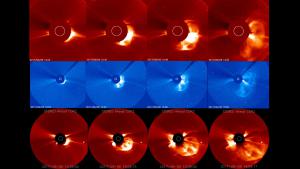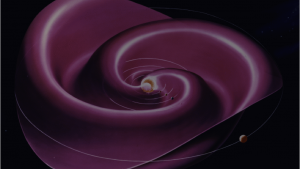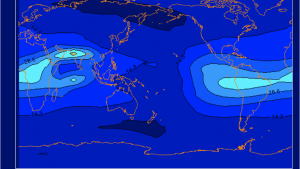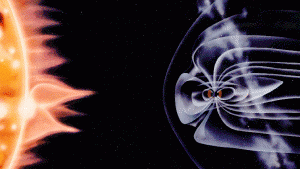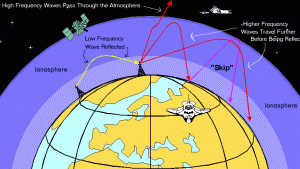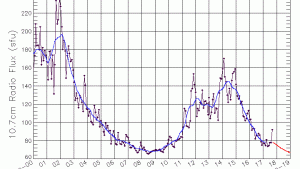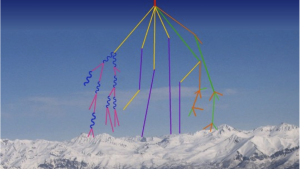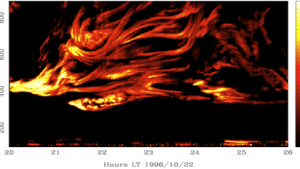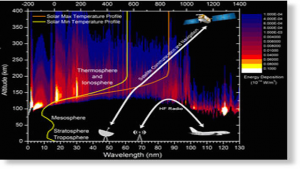Coronal Mass Ejections (CMEs) are large expulsions of plasma and magnetic field from the Sun’s corona.
NOAA Scales mini
Navigation: Low-frequency navigation signals degraded for brief intervals.
phenomenon
The solar wind continuously flows outward from the Sun and consists mainly of protons and electrons in a state known as a plasma.
The Total Electron Content (TEC) is the total number of electrons present along a path between a radio transmitter and receiver.
The magnetosphere is the region of space surrounding Earth where the dominant magnetic field is the magnetic field of Earth, rather than the magnet
The Ionosphere, between 80 and ~600 km in the Earth’s upper atmosphere, is where solar radiation caused ionization creates a layer of electrons that can effect earth systems.
The solar radio flux at 10.7 cm (2800 MHz) is an excellent indicator of solar activity.
Galactic Cosmic Rays (GCR) are the slowly varying, highly energetic background source of energetic particles that constantly bombard Earth.
Ionospheric scintillation is the rapid modification of radio waves caused by small scale structures in the ionosphere.
Solar Extreme Ultraviolet (EUV) is solar radiation that covers the wavelengths 10 – 120 nm of the electromagnetic spectrum.
